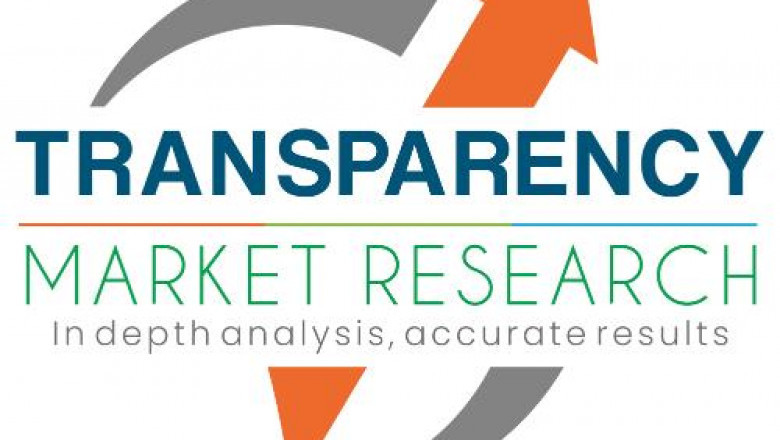views
Drone-based gas leak detection is revolutionizing safety and sustainability in the oil & gas sector. As energy companies face growing pressure to reduce greenhouse gas emissions, aerial monitoring solutions are emerging as a practical and high-impact alternative to traditional detection methods. The global drone-based gas leak detection in oil & gas market was valued at US$ 4.0 Bn in 2023 and is projected to grow at a CAGR of 6.1% from 2024 to 2034, reaching US$ 7.8 Bn by the end of the forecast period.
Why Drones? A Shift in Emission Monitoring
Unmanned Aerial Vehicles (UAVs), commonly known as drones, are increasingly used across sectors for aerial data collection and monitoring. In oil & gas, drones equipped with advanced sensors and GPS enable real-time detection and quantification of gas leaks, particularly methane—a potent greenhouse gas.
These UAVs can detect leaks from up to 100 meters away and offer a safer, faster, and more cost-effective method of monitoring pipelines and industrial facilities. Technologies like thermal image flow analysis and optical gas imaging (OGI) allow teams to visualize leaks and pinpoint their sources, even in high-flow environments.
Market Drivers: Regulation and R&D at the Helm
A major driver of this market is the global push to curb greenhouse gas emissions. According to the International Energy Agency (IEA), energy-related CO₂ emissions rose to a record 37.4 billion tons in 2023. In response, governments worldwide are implementing stricter climate laws. The European Climate Law, for example, targets a 55% reduction in net greenhouse gas emissions by 2030.
This regulatory shift is prompting oil & gas companies to adopt advanced leak detection systems. Drones, with their real-time data capabilities, are ideal tools for meeting compliance requirements.
At the same time, R&D investments are enhancing the capabilities of drone-based systems. Vendors are developing cloud-connected, multi-gas sensors to monitor methane, carbon dioxide, and water vapor. Innovations like video stabilization and optical flow analysis are making these drones even more effective in complex environments.
Notable Technological Advancements
In recent years, several breakthroughs have shaped the landscape of drone-based gas detection:
- HoverGuard by ABB Ltd.: Launched in 2021, this drone-based system detects, quantifies, and maps gas leaks up to 100 meters from distribution pipelines.
- Teledyne FLIR’s Neutrino LC OGI: Introduced in 2024, this mid-wave infrared camera module is designed for UAV integration and hydrocarbon gas detection.
- Percepto’s Autonomous Drone Platform: Backed by US$ 67 Mn in funding, Percepto received a license to deploy drones remotely across the U.S., enhancing inspection and surveillance reach.
These innovations are not only improving detection accuracy but also reducing operational costs and response times.
Regional Insights: Asia Pacific Takes the Lead
Asia Pacific dominated the market in 2023, driven by strong investment in refining capacity and rising domestic oil demand. India, for instance, is expected to add 1 million barrels per day (mb/d) of new refinery capacity over the next seven years—more than any country outside China.
The region's proactive stance on energy security and infrastructure modernization makes it a fertile ground for drone-based monitoring technologies.
Key Players in the Market
The competitive landscape is shaped by both established firms and innovative startups:
- ABB Ltd.
- Percepto
- Volatus Aerospace Corp.
- Aero Spectrum
- Viper Drones
- Vision Aerial
These companies focus on developing robust, cloud-integrated drones capable of real-time data collection and environmental monitoring. Strategic partnerships, product launches, and geographic expansion are common growth strategies.
Future Outlook and Opportunities
The next decade holds promising opportunities for drone-based gas leak detection:
- Integration with AI and IoT: Predictive analytics and automated alerts could further improve the efficiency and responsiveness of drone systems.
- Expansion into Offshore Operations: As technology matures, drones are expected to play a larger role in offshore oil rig inspections, where human access is limited.
- Scalable Deployments: With advancements in autonomy and battery life, fleets of drones could conduct large-scale, continuous surveillance across oil fields and pipeline networks.
As emissions regulations tighten and technology becomes more accessible, the adoption of UAV-based solutions in oil & gas will only accelerate.
Conclusion
The drone-based gas leak detection in oil & gas market is evolving rapidly in response to environmental mandates, safety concerns, and technological progress. With a projected valuation of US$ 7.8 Bn by 2034, this sector is poised to become an essential component of modern energy infrastructure. For stakeholders across the value chain—from regulators and operators to technology providers—the message is clear: drones are no longer a future solution; they are a present-day imperative.






















Comments
0 comment